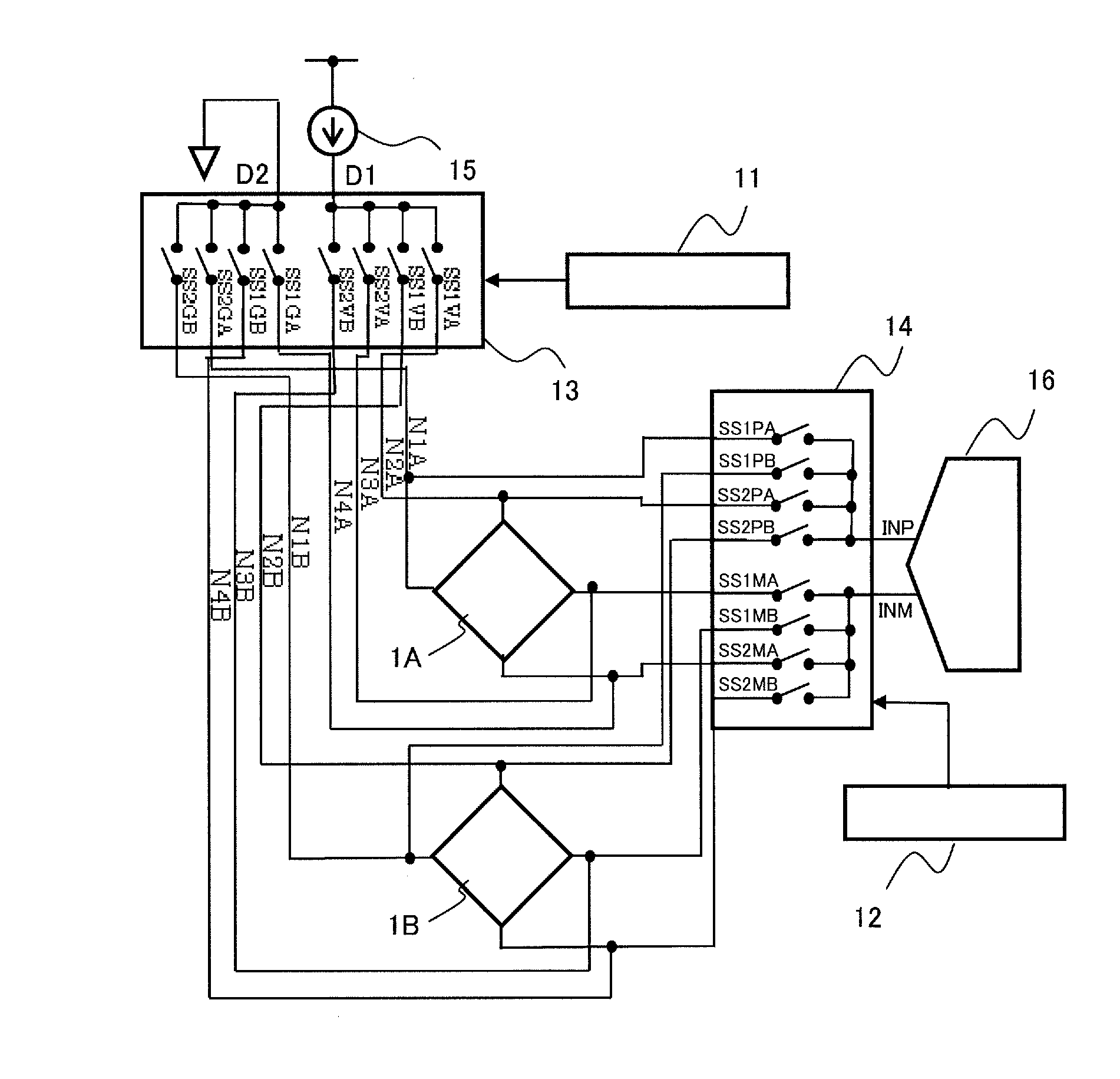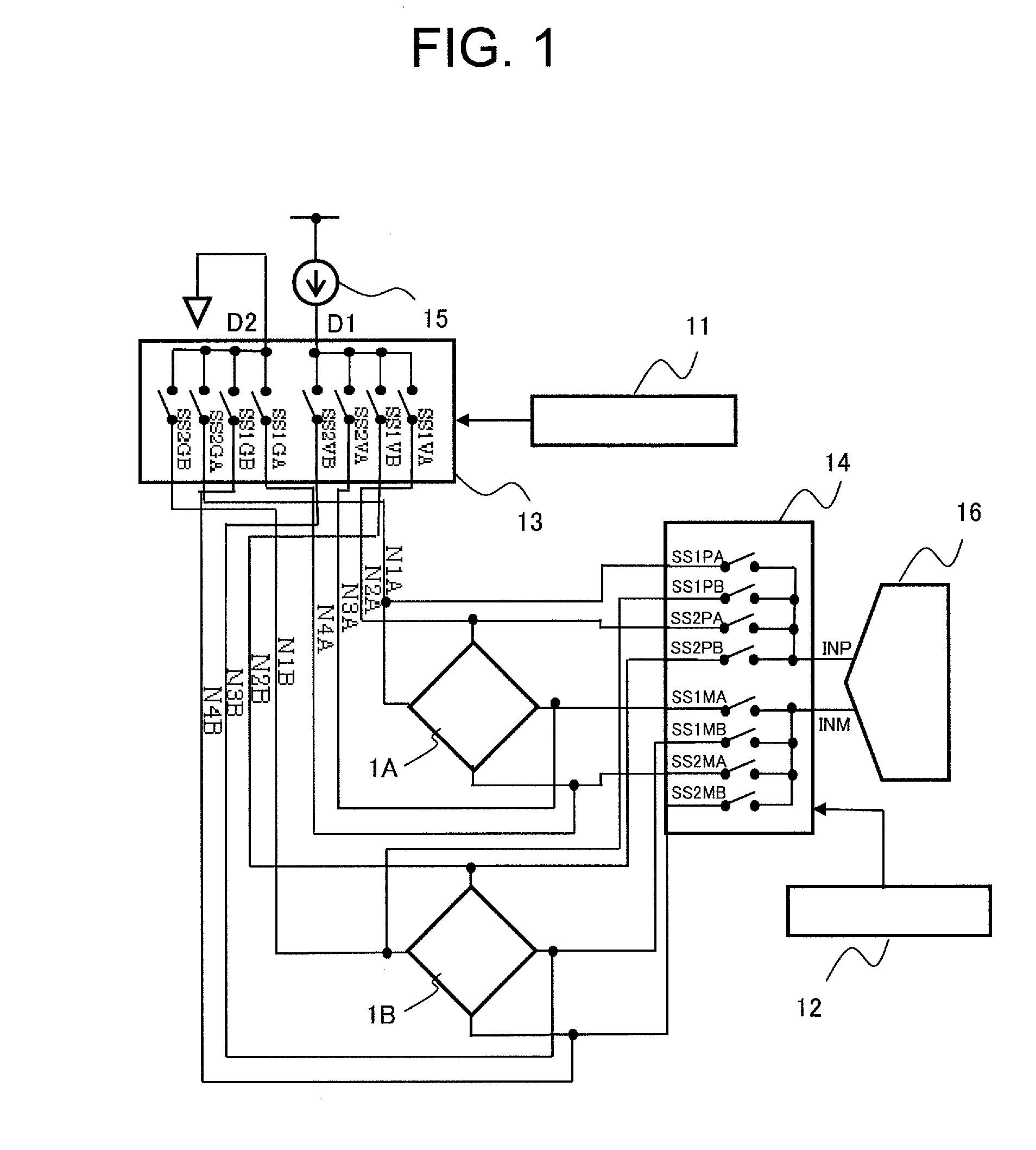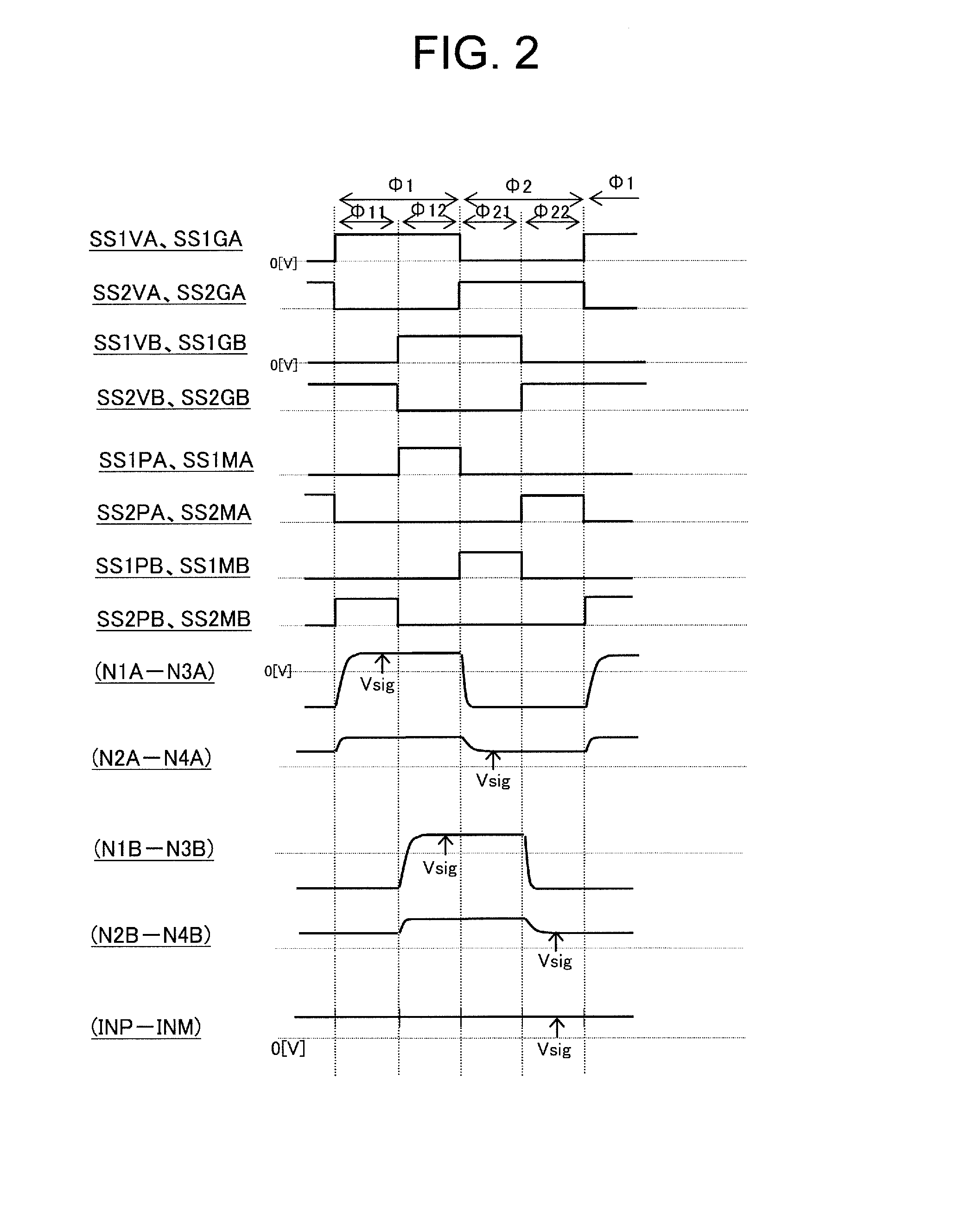Magnetic sensor circuit
a sensor circuit and magnet technology, applied in the field of magnet sensor circuits, can solve the problems of inconvenient method for consecutive time signal processing, and achieve the effects of reducing the current consumption of instrumentation amplifiers, substantially reducing the voltage errors caused by the capacity of each hall element, and accelerating the spinning frequency
- Summary
- Abstract
- Description
- Claims
- Application Information
AI Technical Summary
Benefits of technology
Problems solved by technology
Method used
Image
Examples
first embodiment
[0044]FIG. 1 is a circuit diagram of a magnetic sensor circuit according to a first embodiment.
[0045]The magnetic sensor circuit is equipped with a first hall element 1A, a second hall element 1B, a first switch circuit 13, a second switch circuit 14, a first control circuit 11, a second control circuit 12, a constant current source 15, and a signal processing circuit 16. The signal processing circuit 16 corresponds to a filter processing circuit related to a chopping modulation / demodulation circuit, an addition or the like, an analog-to-digital converter, a comparator (magnetic switch circuit), etc.
[0046]The first hall element 1A has four terminals. Nodes of the respective terminals are assumed to be N1A to N4A. The second hall element 1B has four terminals. Nodes of the respective terminals are assumed to be N1B to N4B. The signal processing circuit 16 has a positive phase input terminal INP and a negative phase input terminal INM.
[0047]The first hall element 1A and the second hal...
second embodiment
[0055]FIG. 3 is a circuit diagram of a magnetic sensor circuit according to a second embodiment.
[0056]The magnetic sensor circuit according to the present embodiment is equipped with a first hall element 1A, a second hall element 1B, a third hall element 1C, a fourth hall element 1D, a first switch circuit 33, a second switch circuit 34, a first control circuit 31, a second control circuit 32, and a signal processing circuit 36.
[0057]The third and fourth hall elements 1C and 1D have four terminals as with the first and second hall elements 1A and 1B. Nodes of the respective terminals are assumed to be N1C to N4C and N1D to N4D. The signal processing circuit 36 has positive phase input terminals INPA, INPB, INPC, and INPD, and negative phase input terminals INMA, INMB, INMC, and INMD.
[0058]As the hall elements, the third hall element 1C and the fourth hall element 1D are added to the magnetic sensor circuit according to the first embodiment and similarly connected between the first s...
third embodiment
[0067]FIG. 7 is a circuit diagram of a magnetic sensor circuit according to a third embodiment.
[0068]The magnetic sensor circuit according to the present embodiment is equipped with a first hall element 1A, a second hall element 1B, a third hall element 1C, a fourth hall element 1D, a first switch circuit 33, a second switch circuit 74, a first control circuit 31, a second control circuit 72, and a signal processing circuit 16.
[0069]A different point of the third embodiment from the second embodiment resides in that the second switch circuit 74 and the second control circuit 72 are respectively different in configuration and control signal, and the signal processing circuit 16 is configured to take a positive phase input terminal INP and a negative phase input terminal INM as a pair.
[0070]FIG. 8 is a circuit diagram illustrating one example of the second switch circuit 74. Each input terminal, each output terminal, and each switch are connected and controlled in such a relationship ...
PUM
 Login to View More
Login to View More Abstract
Description
Claims
Application Information
 Login to View More
Login to View More - R&D
- Intellectual Property
- Life Sciences
- Materials
- Tech Scout
- Unparalleled Data Quality
- Higher Quality Content
- 60% Fewer Hallucinations
Browse by: Latest US Patents, China's latest patents, Technical Efficacy Thesaurus, Application Domain, Technology Topic, Popular Technical Reports.
© 2025 PatSnap. All rights reserved.Legal|Privacy policy|Modern Slavery Act Transparency Statement|Sitemap|About US| Contact US: help@patsnap.com



